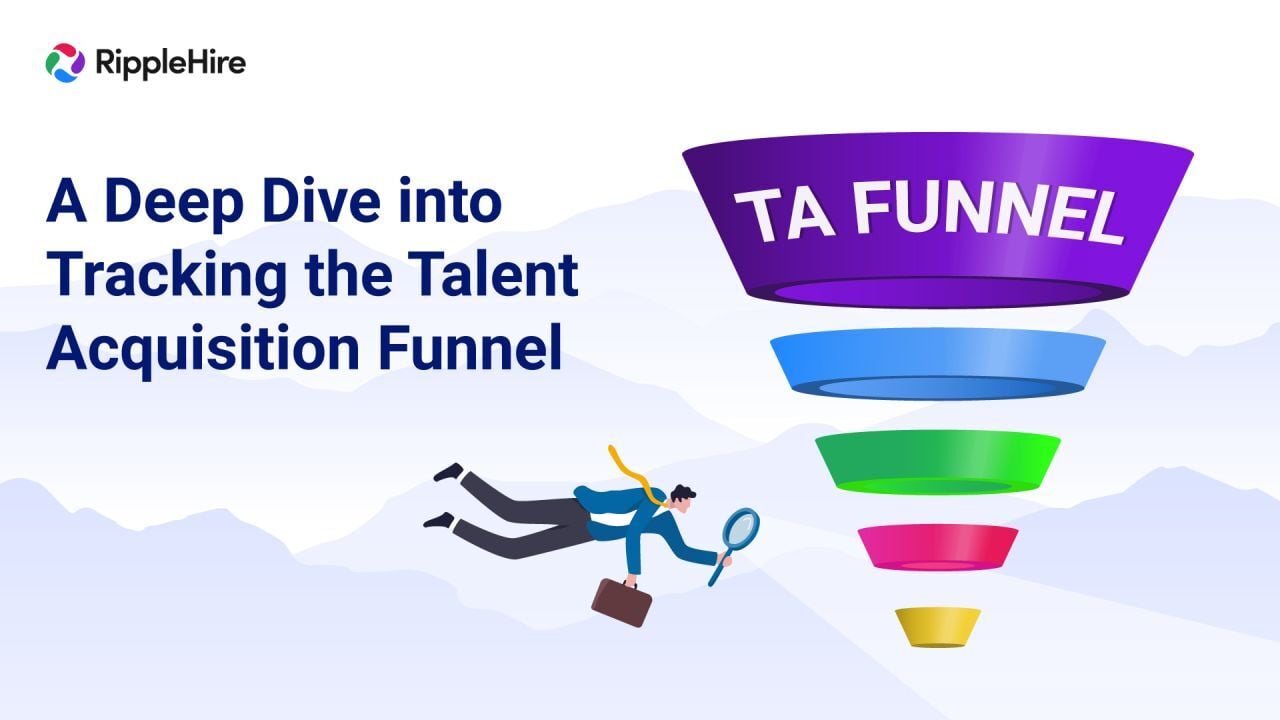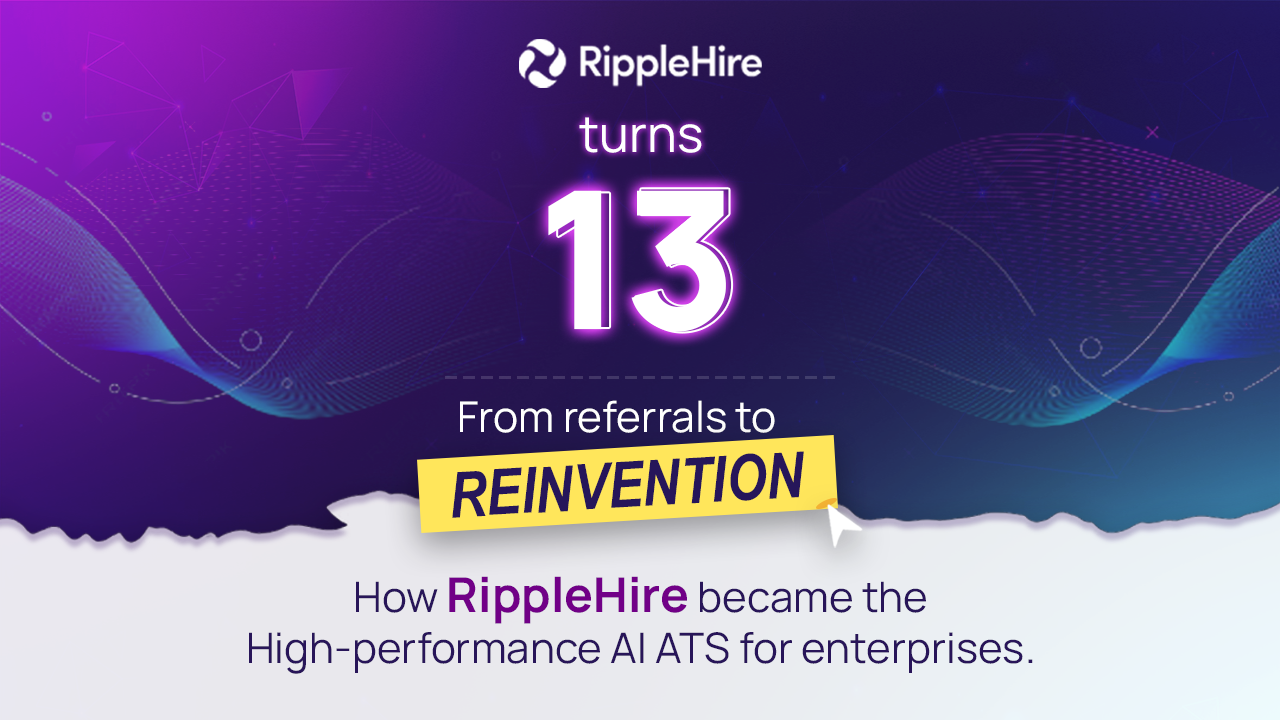How to Track and Optimize Your Talent Acquisition Funnel in India (2025 Guide)
Cracking the talent code isn't about luck or guesswork. It's about mastering a systematic approach to finding the right people. With markets evolving at an unprecedented pace, the right talent is the core engine driving business success.
But the real challenge isn't merely finding talent. It's about understanding every twist and turn of the journey - from awareness to application, from interview to offer.
In a bustling employment landscape, each phase of this funnel matters. And understanding how to track it effectively is crucial. This blog is dedicated to breaking down that process, providing insights, tools, and techniques specific to the Indian context.
You'll learn how to pinpoint where potential hires drop off, how to optimize each stage, and how to ensure that your process aligns with the needs and expectations of today's job-seekers.
What is a Talent Acquisition Funnel?
The talent acquisition funnel is a visual representation of the recruitment process, breaking it down into distinct stages, from the initial awareness of an opening to the final hiring. Think of it like a journey your candidates embark upon, starting with learning about the job opportunity and ending with joining your team.
Significance of Tracking the Talent Acquisition Funnel
Tracking the talent acquisition funnel is not just a theoretical concept; it's a practical tool that can drastically transform your recruitment strategy.
By providing a clear view of what works and what doesn't, it allows organizations to make smarter, more efficient, and more effective hiring decisions. It's the roadmap that guides you to the right talent, helping you build a team that fits and furthers your organization's goals.
Here's why it matters:
1) Insights into Candidate Behavior:
By tracking the funnel, recruiters can understand where potential candidates lose interest or face obstacles. For example, if a significant number of applicants drop off after the first interview stage, it might signal that the interview process is too cumbersome or the expectations are not clear.
2) Resource Optimization:
Tracking ensures that efforts and resources are spent effectively. If you notice that many candidates are stuck at the application stage, investing in a more user-friendly application system might be the solution.
3) Alignment with Market Needs:
Understanding where candidates come from and what drives them through the funnel helps in crafting messages and strategies that resonate with the target audience. For example, a tech firm in Bengaluru found that highlighting flexible work options in their job ads significantly increased the conversion rate at the awareness stage.
Impact on Overall Recruitment Strategy
By tracking each stage of the talent acquisition funnel, recruiters have concrete data to guide their strategies. This leads to more informed decisions and tailored approaches that match the specific needs and preferences of potential hires.
It also helps in identifying bottlenecks and areas of friction in the hiring process. Smoothing these out ensures a more positive experience for candidates, reflecting well on your employer brand.
Understanding where resources are best allocated allows for more cost-effective recruitment. If a particular source of candidates consistently leads to successful hires, focusing more efforts on that channel will likely yield better results.
Challenges Without Proper Tracking And Measurement
In a country where the battle for talent is intensifying, and the cost of a bad hire can be exorbitant, the absence of proper tracking and measurement of the talent acquisition funnel is a risk that enterprises can ill afford. The stakes are high, and the margins for error are thin. Understanding these challenges is the first step towards transforming them into opportunities
1) Inefficiency in the Hiring Process:
Without proper tracking, there's a lack of visibility into what stages are consuming most time and resources. For example, a manufacturing firm in Chennai might be spending weeks on screening resumes manually, leading to delays in the hiring process, while an automated tracking system could have highlighted this bottleneck.
2) Mismatch of Talent:
Absence of proper insights can lead to hiring decisions that don't align with the organization's actual needs. This misalignment might not only result in an underperforming employee but can also cause dissatisfaction and eventually attrition.
3) Wasted Marketing Efforts:
In a country as vast and varied as India, a one-size-fits-all approach to talent marketing rarely works. Without tracking, organizations might continue to invest in channels that don’t resonate with their target demographic, leading to wasted efforts and resources.
4) Poor Candidate Experience:
A prolonged or convoluted hiring process can frustrate candidates. Without tracking, you can't identify these pain points. This could tarnish the company's reputation, particularly in close-knit industries or communities where word of mouth spreads quickly.
5) Lack of Competitiveness:
In burgeoning sectors like India's tech industry, the competition for top talent is fierce. Without tracking the effectiveness of the recruitment strategies, organizations might find themselves outpaced by competitors who are leveraging data to make smarter hiring decisions.
6) Ineffective Diversity and Inclusion Efforts:
India's workforce is remarkably diverse. Organizations aiming for inclusive growth need to understand how different groups move through the hiring funnel. Without tracking, these efforts can become superficial, failing to address the unique challenges and opportunities present in the Indian context.
Optimizing the Talent Acquisition Funnel
Optimizing each touchpoint requires a thorough understanding of what the candidate experiences at each stage of their journey. The process is not just about getting a candidate to accept an offer, but building a relationship that starts with the first interaction and continues through onboarding and beyond.
In a competitive talent market, paying careful attention to these touchpoints is crucial for not just attracting but also retaining top talent.
1) Awareness Stage:
Touchpoint: Job Advertisement
How to optimize for these touchpoints:
1) Choose the Right Channels: Select platforms that align with where your target audience spends their time, whether on job portals, social media, or industry-specific forums. Understanding your audience's behavior ensures that your advertisement reaches them effectively.
2) Craft Engaging Content: Write clear and concise job advertisements that not only outline the role but also reflect your company's values and culture. Use engaging visuals or videos if applicable to grab attention.
3) Measure and Adjust: Regularly track the performance of your advertisements across different channels. If a particular platform isn't yielding results, consider reallocating resources to a more effective one. Be agile in your approach.
2) Interest Stage:
Touchpoints: Company Website & Career Page
How to optimize for these touchpoints:
1) Showcase Company Culture: Utilize your career page to provide a glimpse into your company's culture. Include photos, videos, and testimonials that illustrate what it's like to work at your organization.
2) Provide Easy Navigation: Ensure that the career page is easily accessible and that navigation to relevant job positions is intuitive. The user experience should be as frictionless as possible to keep potential candidates engaged.
3) Highlight Benefits and Growth Opportunities: Clearly outline the benefits, perks, and career advancement opportunities that your organization offers. This information often plays a significant role in a candidate's decision-making process.
3) Consideration Stage:
Touchpoints: Job Description & Application Process
How to optimize for these touchpoints:
1) Write Clear Job Descriptions: Include specific details about the role, required qualifications, responsibilities, and expectations. Avoid jargon and be as transparent as possible to allow candidates to self-assess their fit.
2) Simplify the Application Process: Reduce the number of steps required to apply and ensure that the application can be completed on various devices, including mobile phones. A complicated application process can deter potential candidates.
3) Promptly Acknowledge Applications: Sending an immediate acknowledgment or thank-you email builds goodwill. It reassures the candidate that their application has been received and that they will be informed about the next steps in due course.
4) Application Stage:
Touchpoints: Confirmation Emails & Communication
How to optimize for these touchpoints:
1) Send Timely Confirmation Emails: As soon as a candidate submits an application, send a confirmation email. This immediate response reassures them that the application has been received and sets a positive tone for future interactions.
2) Keep Candidates Informed: Regularly update candidates about the status of their application and the next steps in the process. This continuous communication enhances trust and keeps candidates engaged.
3) Personalize Communication Where Possible: If feasible, use the candidate's name in emails and other communication. Even small personal touches can make the candidate feel valued and create a positive impression.
5) Interview Stage:
Touchpoints: Scheduling, Preparation & Interview Experience
How to optimize for these touchpoints:
1) Offer Flexible Scheduling Options: Recognize that candidates may have existing commitments and offer flexibility in interview scheduling. Tools that allow candidates to choose their preferred time slot can simplify this process.
2) Provide Clear Interview Preparation Material: Send a pre-interview package containing all necessary information, such as interview format, expected duration, names of interviewers, and any material or preparation needed. This helps the candidate come prepared and at ease.
3) Ensure a Respectful Interview Experience: Train interviewers to conduct interviews professionally and empathetically. Timely starts, clear communication, and a respectful attitude go a long way in creating a positive candidate experience.
6) Offer Stage:
Touchpoints: Offer Presentation & Negotiation
How to optimize for these touchpoints:
1) Present Offers Clearly and Transparently: Clearly outline all aspects of the offer, including salary breakdown, benefits, work-life balance, and opportunities for growth. Transparency helps in building trust and making the decision-making process easier for the candidate.
2) Allow Room for Discussion and Negotiation: If the candidate has concerns or requests, be open to discussion and negotiation within reasonable limits. Feeling heard and respected in this phase can significantly enhance the candidate's perception of the organization.
3) Provide a Timeline for Decision Making: Give candidates a reasonable time to consider the offer and make a decision. Clearly communicate this timeline and be available to answer any questions or address any concerns during this period.
7) Onboarding Stage:
Touchpoints: Welcome, Orientation & Integration
How to optimize for these touchpoints:
1) Onboarding is not just a single event but an ongoing process. A comprehensive and engaging orientation program, regular check-ins, and providing a point of contact for any questions or concerns can make the transition smoother and help integrate the new hire into the team effectively.
Final Thoughts
As you navigate the complexities of tracking and optimizing the talent acquisition funnel, remember that the process isn't just about filling vacancies. It's about building meaningful relationships with candidates and creating a seamless journey from awareness to onboarding.
The tools you choose play a crucial role in this endeavor.
Have you considered leveraging an Applicant Tracking System (ATS) that aligns with your goals?
RippleHire offers an intuitive, data-driven approach, tailored to provide insights and automation where you need it most. Explore how RippleHire can transform your recruitment strategy and turn insights into action. The next step in refining your talent acquisition process might just be a click away.
FAQ Section
1. What is a talent acquisition funnel?
A talent acquisition funnel is a structured representation of the candidate journey—from awareness to onboarding. It helps recruiters visualize and optimize each stage to improve hiring outcomes and candidate experience.
2. Why is it important to track the talent acquisition funnel?
Tracking helps identify bottlenecks, drop-off points, and inefficiencies in the hiring process. It enables data-driven decisions that improve time-to-hire, candidate experience, and hiring quality—especially in competitive markets like India.
3. What are the key stages of a talent acquisition funnel?
The major stages include:
-
Awareness (Job ads)
-
Interest (Company website/career page)
-
Consideration (Job description/application process)
-
Application (Submission & communication)
-
Interview (Scheduling & experience)
-
Offer (Negotiation & acceptance)
-
Onboarding (Integration into the team)
4. What tools help optimize the talent acquisition funnel?
Applicant Tracking Systems (ATS) like RippleHire are essential for automating tracking, improving collaboration, streamlining workflows, and gathering insights at every stage of the funnel.
5. What happens if you don’t track your funnel?
You risk inefficiencies, wasted resources, poor candidate experience, and higher attrition. In India’s fast-paced hiring landscape, this can lead to talent loss and reputational damage.
6. How can companies improve conversion at the awareness stage?
Use engaging job ads on the right platforms, highlight benefits and work culture, and monitor which channels bring the best candidates—then double down on what works.
7. What’s a common reason for drop-off during the application stage?
A long or clunky application process. Simplify forms, ensure mobile-friendliness, and send instant confirmation emails to keep candidates engaged.
8. How does RippleHire help with funnel tracking and optimization?
RippleHire’s high-performance ATS gives you visibility into each stage, flags drop-offs, automates workflows, and supports collaborative hiring—enabling you to hire faster, smarter, and at scale.















